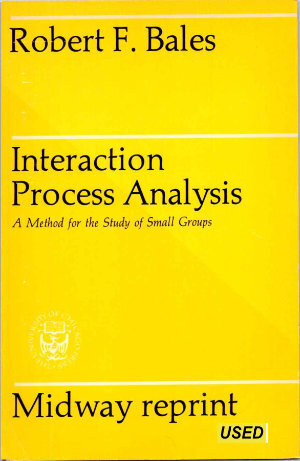Edited by DORWIN CARTWRIGHT and ALVIN ZANDER
"Group Dynamics: Research And Theory" offers a comprehensive examination of the inner workings of groups, drawing on the latest research and theories in the field. This insightful book delves into the complexities of group behavior, communication patterns, decision-making processes, and leadership dynamics. Whether you are a student, researcher, or professional looking to enhance your understanding of group dynamics, this book serves as an invaluable resource. With its clear writing style and practical examples, "Group Dynamics: Research And Theory" is an essential read for anyone interested in unraveling the intricacies of human interaction within group settings.
Evanston, Illinois, White Plains, New York. ROW, PETERSON AND COMPANY.. 1953. 645p.















